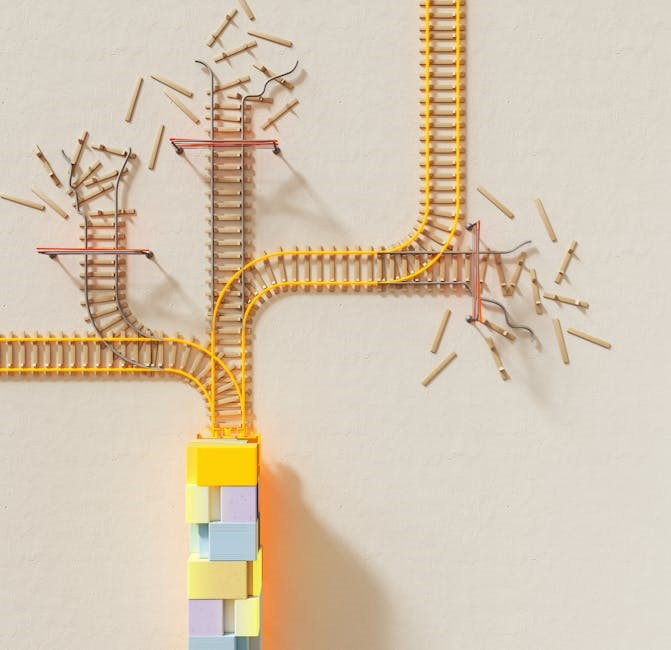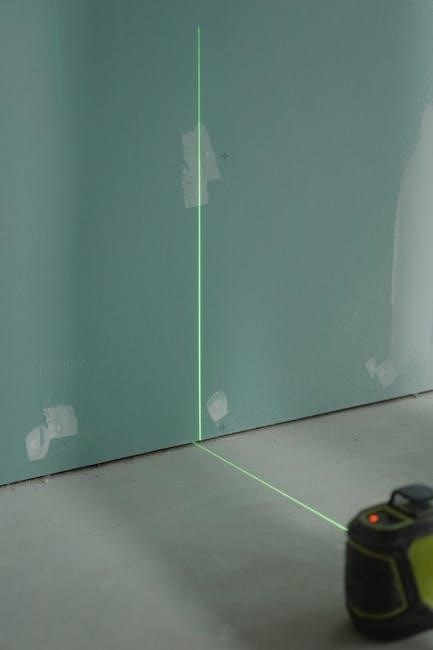Wheel alignment ensures your vehicle’s tires are properly angled and aligned with the manufacturer’s specifications. This process improves handling, reduces tire wear, and enhances safety. DIY methods like string alignment or professional tools can be used to achieve accurate results. Regular checks are essential for optimal performance.
The Importance of Proper Alignment

Proper wheel alignment is crucial for ensuring your vehicle operates efficiently and safely. Misaligned wheels can lead to uneven tire wear, reducing the lifespan of your tires and potentially causing costly replacements. When tires are not aligned correctly, they may pull to one side, making it difficult to maintain a straight path, especially at higher speeds.
Improper alignment can also negatively impact fuel efficiency, as your car may work harder to move forward, leading to increased fuel consumption. Additionally, misalignment can affect the handling and stability of your vehicle, increasing the risk of accidents. Ensuring proper alignment helps maintain optimal performance, improves steering precision, and enhances overall driving safety.
Regular alignment checks are essential, especially after noticing signs like uneven tire wear, a crooked steering wheel, or vibrations while driving. By addressing alignment issues promptly, you can prevent further damage to your vehicle’s suspension and steering systems. Proper alignment not only extends the life of your tires but also ensures a smoother and more controlled driving experience.

Types of Wheel Alignment
Wheel alignment can be categorized into different types based on the vehicle’s configuration and the extent of adjustments needed. The most common types include two-wheel alignment, four-wheel alignment, thrust alignment, and directional alignment. Two-wheel alignment focuses solely on the front wheels, making it a cost-effective option for vehicles with rear-wheel drive. Four-wheel alignment, on the other hand, adjusts all four wheels, ensuring optimal performance for front-wheel and all-wheel-drive vehicles.
Thrust alignment prioritizes the rear wheels, aligning them with the vehicle’s thrust line to improve stability and reduce pulling to one side. Directional alignment is a more advanced process, focusing on aligning the wheels with the vehicle’s centerline for precise handling. Each type addresses specific issues, such as uneven tire wear, steering drift, or vibrations, ensuring the vehicle drives smoothly and efficiently.
Understanding the differences between these types helps in selecting the most appropriate alignment service for your vehicle. Whether it’s a routine adjustment or addressing a specific problem, proper alignment ensures your car performs at its best. Regular checks and timely adjustments are key to maintaining your vehicle’s overall health and safety on the road.

Tools and Equipment Needed
To perform a wheel alignment, you’ll need specific tools and equipment to ensure accuracy and safety. For a professional setup, an alignment machine is essential, as it measures camber, caster, and toe angles precisely. Additionally, a tire pressure gauge is crucial to ensure all tires are inflated to the recommended levels before starting the process.
A jack and jack stands are necessary for lifting the vehicle and providing stable support during adjustments. For DIY enthusiasts, a string alignment kit or laser alignment tools can be effective alternatives to professional machines. These tools help measure toe angles and ensure the wheels are properly aligned.
Other essential items include wrenches and sockets for adjusting suspension components, such as tie rods and control arms. A camber gauge can be useful for measuring the tilt of the wheels relative to the road. For advanced adjustments, a thrust line checker may be required to ensure the rear wheels align with the vehicle’s centerline.
Lastly, a flat, level surface is critical for accurate measurements. Whether you’re using professional equipment or DIY methods, having the right tools ensures a successful alignment process. Always refer to your vehicle’s manual or manufacturer guidelines for specific tool recommendations. Proper equipment helps achieve precise adjustments and improves your vehicle’s performance and safety.
The Adjustment Procedure
The adjustment procedure involves loosening suspension components, measuring angles, and making precise adjustments. Start with pre-alignment checks, then use alignment tools to measure camber, caster, and toe. Adjust tie rods for toe alignment, and use manufacturer guidelines for camber and caster adjustments. Test drive the vehicle afterward to ensure proper alignment.
5.1 Pre-Alignment Checks
Before performing any adjustments, it’s crucial to conduct pre-alignment checks to ensure accuracy and safety. Start by checking tire pressure and setting it to the manufacturer’s recommended levels. Inspect the suspension and steering components for any damage or wear, as loose or damaged parts can affect alignment readings. Ensure the vehicle is on a level surface and the steering wheel is centered. Measure ride height to confirm it matches specifications, as incorrect height can alter alignment angles. Check the battery to ensure it’s fully charged, as some systems require power for accurate measurements. Look for uneven tire wear, which may indicate existing alignment issues. Finally, remove any additional weight from the vehicle and ensure all cargo areas are empty. These steps ensure a baseline for accurate adjustments and help identify potential issues before proceeding with the alignment process.
5.2 Performing Adjustments
Once pre-alignment checks are complete, begin the adjustment process by loosening the jam nuts on the tie rods and other adjustable components. Use the manufacturer’s specifications to guide adjustments for toe, camber, and caster. Start with the rear wheels, adjusting camber and toe as needed. For front-wheel-drive vehicles, focus on the front-end alignment first. Tighten all components securely after adjustments to ensure stability. Use a wrench to turn the tie rods for toe adjustments, and adjust camber by modifying the suspension components. Caster adjustments may require altering the upper control arms or other suspension parts. After completing adjustments, recheck all angles to confirm they meet specifications. Finally, tighten all jam nuts and test drive the vehicle to ensure proper alignment and handling. Always refer to the vehicle’s service manual for specific adjustment procedures, as methods may vary by make and model. Precision is key to achieving optimal alignment and improving vehicle performance;
DIY Alignment Methods
DIY wheel alignment is a cost-effective and straightforward process that can be performed at home with basic tools. The most common method involves using a string alignment technique. Start by placing your car on a level surface and ensuring the tires are inflated to the recommended pressure. Set up two jack stands on either side of the vehicle, a few feet apart, and run a string from one stand, around the rear tire, to the other stand. This creates a reference line for measuring toe alignment. Use a tape measure to check the distance between the string and the front and rear tires, adjusting the tie rods to achieve the desired toe specifications. For camber adjustments, use a camber gauge or a smartphone app to measure and adjust the suspension components. After making adjustments, test drive the vehicle to ensure proper alignment. While DIY methods are effective, they may not achieve the precision of professional equipment. Always refer to your vehicle’s service manual for specific guidance, and consider having a professional alignment done for optimal results. Regular DIY checks can help maintain alignment and extend tire life.

Professional Wheel Alignment Process
A professional wheel alignment process involves advanced tools and expertise to ensure precise adjustments. Mechanics begin by test-driving the vehicle to assess handling and identify issues. The car is then lifted onto a hoist, and specialized alignment machines are used to measure the current angles of the wheels, including toe, camber, caster, and thrust. These measurements are compared to the manufacturer’s specifications, and adjustments are made to the suspension components, such as tie rods, control arms, and steering links, to restore proper alignment. Once adjustments are complete, the vehicle is test-driven again to confirm the improvements. Professional alignment ensures optimal tire wear, improved handling, and enhanced safety. Many shops also offer before-and-after printouts, showing the adjustments made. This process is recommended for those unfamiliar with DIY methods or for vehicles with complex suspension systems. Regular professional alignments are crucial for maintaining vehicle performance and extending tire life.

Common Alignment Issues
Wheel alignment problems can arise from various factors, including uneven road surfaces, accidents, or wear and tear on suspension components. One of the most common issues is improper toe alignment, where tires point inward or outward, causing uneven tire wear and poor handling. Camber misalignment, where wheels tilt too far inward or outward, can also lead to reduced traction and accelerated wear on specific parts of the tires. Caster issues, though less common, can affect steering stability and return-to-center performance. Another frequent problem is thrust angle misalignment, which causes the vehicle to pull to one side, leading to uneven tire wear and reduced fuel efficiency. Additionally, worn or damaged suspension parts, such as tie rods or control arms, can throw off alignment. Drivers may notice symptoms like a crooked steering wheel, vibrations, or the car drifting while driving. Ignoring these issues can result in costly repairs, reduced tire life, and compromised safety. Regular inspections and timely adjustments are crucial to maintaining proper alignment and overall vehicle performance.
Cost Implications
The cost of wheel alignment can vary depending on the type of vehicle and the service provider. On average, a two-wheel alignment typically ranges from $50 to $70, while a four-wheel alignment can cost between $100 to $150. DIY alignment methods, such as using a string setup, can save money but may require additional tools. Professional shops often use advanced equipment, ensuring precision and longevity of adjustments. Regular alignments can prevent costly repairs by reducing uneven tire wear and improving fuel efficiency. Neglecting alignment issues can lead to premature tire replacement, which can cost hundreds of dollars. Additionally, improper alignment can damage suspension components, leading to even higher repair bills. Investing in proper alignment is a cost-effective way to maintain vehicle performance and safety. Factors like labor costs, location, and vehicle type can influence the final price, so it’s wise to compare rates and services before committing. Proper alignment is a small expense compared to the long-term savings it provides.

Maintenance Tips
Regular wheel alignment checks are crucial for maintaining your vehicle’s performance and extending the life of its tires. Start by ensuring your tire pressure matches the manufacturer’s recommendations, as incorrect pressure can affect alignment readings. Inspect your suspension and steering components regularly for any signs of wear or damage, as these can throw off your alignment. Avoid driving over potholes or curbs aggressively, as impacts can knock your wheels out of alignment. After installing new tires or suspension parts, always schedule a professional alignment to ensure everything is set correctly. Additionally, if you notice your vehicle pulling to one side or vibrations in the steering wheel, address the issue promptly. DIY checks, such as using a string alignment method, can help you monitor your alignment at home. However, for precise adjustments, rely on professional tools and expertise. By staying proactive with maintenance, you can prevent costly repairs and enjoy a smoother, safer driving experience.
Proper wheel alignment is essential for ensuring your vehicle’s safety, performance, and longevity. By understanding the importance of alignment and taking proactive steps to maintain it, you can prevent uneven tire wear, improve handling, and reduce long-term maintenance costs. Whether you opt for DIY methods or professional services, regular checks and adjustments will keep your vehicle running smoothly. Remember, alignment is not a one-time fix but an ongoing process that requires attention, especially after installing new components or encountering rough road conditions. By following the guidelines and tips outlined, you can ensure your vehicle remains in optimal condition, providing you with a safer and more enjoyable driving experience for years to come.
